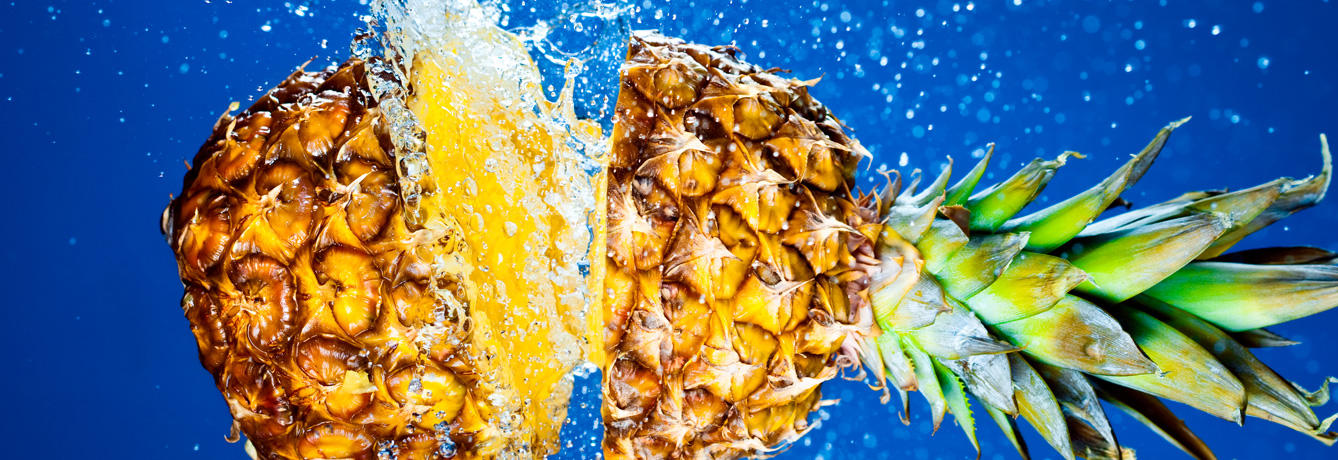Conventional wisdom has long maintained that fruit enzymes – like the bromelain in pineapple – do not survive the journey through the digestive tract due to gastric acidity. In other words, all of us enjoying fresh pineapple to aid digestion after a meal may be nibbling on wishful thinking. But recent research proves the power — and perseverance — of bromelain, at least in mice.
Duke scientists found that the enzyme makes it to the colon intact, free to bestow anti-inflammatory benefits that may play a role in preventing ulcerative colitis. Emerging research continues to build the case that bromelain – and other fruit enzymes (kiwi’s actinidin and papaya’s papain) may potentially have human health benefits as well.
Dole scientists have now shown that the activities of these enzymes vary as a function of plants’ anatomy. For example, the chart below indicates that for pineapple the highest activity is in the flesh, less so in the peel and stems (good news for consumers as that is the part we eat). Papaya, by contrast shows the most activity in the peel, less so in the flesh. Why do different tropical plants distribute their enzymes so differently? More research is needed to know for sure, but for now Dole will continue to collaborate with universities located on the NCRC campus to explore how these enzymes are produced, and potential benefits for human health.

Published March 1, 2013



